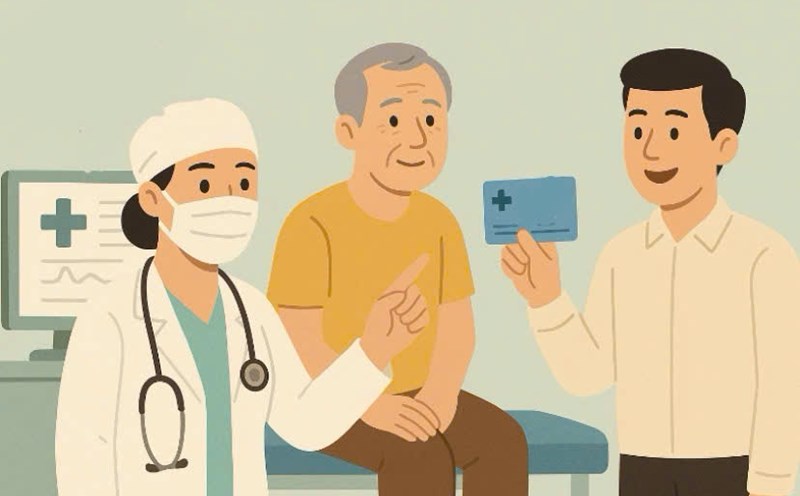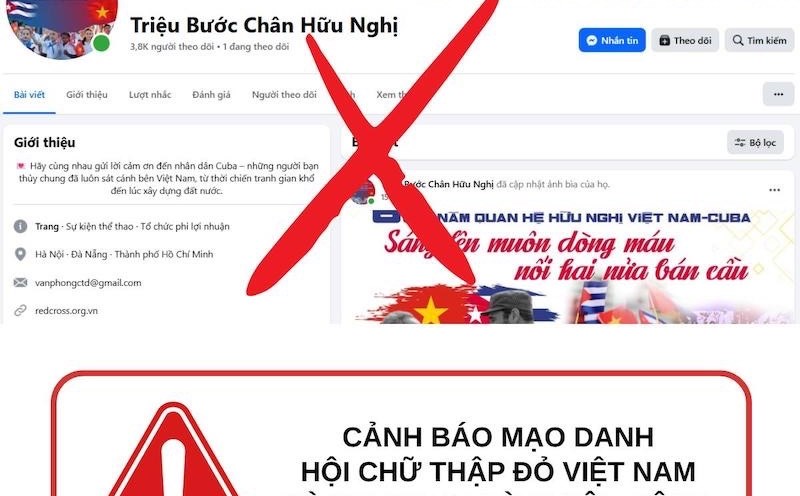Implementation procedures
Step 1: When examining and treating a patient, a health insurance participant must present information about a health insurance card, identification documents and related documents according to regulations to the medical examination and treatment facility.
Step 2: The medical examination and treatment facility receives patients participating in health insurance into the medical examination and treatment facility for diagnosis and treatment.
Specific instructions for 9 cases of health insurance medical examination and treatment
Case 1: When examining and treating a patient, a health insurance participant must present information about the health insurance card in one of the following forms:
Identification card or citizen identification card or level 2 electronic identification account (VNeID) with integrated information about the health insurance card.
Electronic or paper health insurance card.
In case of using a health insurance card without a photo or health insurance code, one of the other documents proving relatives must be presented.
Case 2: For children under 6 years old, they can only present a paper or electronic health insurance card or health insurance code; in case they have not been issued a card, they must present the original birth certificate/photocopy.
For newborns, the child's father or mother or relatives must sign a confirmation on the medical record or a representative of a medical examination and treatment facility must confirm on the medical record in case the child does not have a father, mother or relatives.
Case 3: While waiting for the issuance or change of card information, when coming for medical examination and treatment, the health insurance participant must present a receipt of the application and make an appointment to return the issuance, reissue and change of health insurance card.
Information about the health insurance card is issued by the social insurance agency or an organization or individual authorized by the social insurance agency to receive the application for reissuance of the card, exchange of the issued card and a type of document proving the identity of that person.
Case 4: The person who has donated a body part must present information about the health insurance card according to case 1 or case 3.
In case there is no health insurance card, a discharge paper must be presented by the medical examination and treatment facility that took the body part of the person who donated the body part and one of the documents proving the person's identity.
In case there is no health insurance card but it must be treated immediately after donation, the medical examination and treatment facility and the patient's patient or relatives confirm it in the medical record.
Case 5: Emergency case
Health insurance participants must present documents according to case 1 or case 2 or case 3 in this procedure before the end of the treatment period.
Case 6: In case the patient has an electronic health insurance card when going to the health insurance examination and treatment but cannot present the electronic health insurance card due to a link to a level 2 electronic identification account (VNeID) or an error in the VssID application or an error in connection to the Internet:
Patients provide health insurance card code information for medical examination and treatment facilities to look up information on the Data Receipt Portal of Vietnam Social Insurance.
In case the Data Reception Portal of Vietnam Social Insurance cannot look up, the medical examination and treatment facility will record the health insurance card code information and receive patients for medical examination and treatment. Medical examination and treatment facilities coordinate with social insurance agencies to look up health insurance card information.
Case 7: The initial registration for health insurance examination and treatment at a specialized and basic medical examination and treatment facility, when examining and treating a disease and not at the correct initial health insurance examination and treatment registration place due to a change of temporary residence or place of residence, will be examined and treated at a basic medical examination and treatment facility suitable for the new temporary residence or stay, if the health insurance participant changes the place of residence for less than 30 days, must present the declaration of the information of the stay according to the provisions of the law on residence:
Documents in one of the above cases 1, 2, 3, 4.
One of the following documents: Document on sending to work; Student, university card; Document on leave with confirmation from the agency...
Case 8: Patients in cases where they are re-examined by health insurance examination and treatment facilities:
The medical examination and treatment facility shall record the content and schedule of the re-examination in the Re-examination Appointment Form or in the prescription and discharge paper for the patient.
The re-examination appointment slip has a paper stamp of the medical examination and treatment facility on the left corner, above and the signature of the treating physician. The electronic copy of the re-examination appointment form with the digital signature of the treating physician. Each Re-examination Appointmentmentment Form is only used once.
Case 9: Patients in case of transfer to a health insurance examination and treatment facility:
In case of transferring health insurance examination and treatment facilities according to professional requirements, the medical examination and treatment facility where the patient is transferred must have a Transfer Form for medical examination and treatment facilities according to the prescribed form. The transfer form to a medical examination and treatment facility is valid for 10 working days.
Health insurance participants with diseases, disease groups and prescribed cases are allowed to use a Transfer Form for medical examination and treatment facilities with a validity of 1 year.









